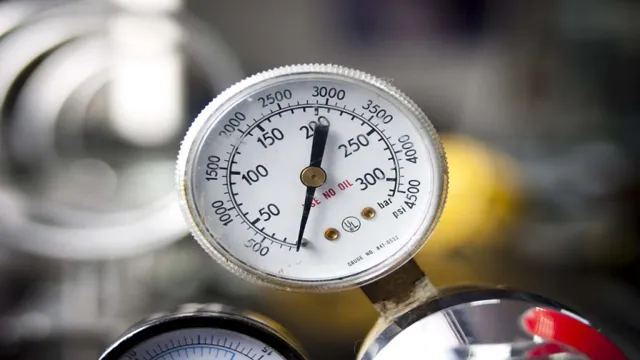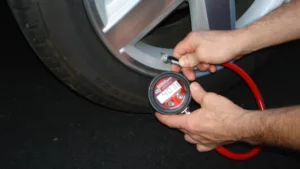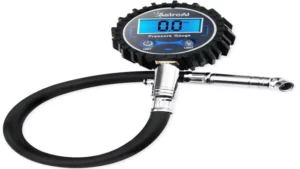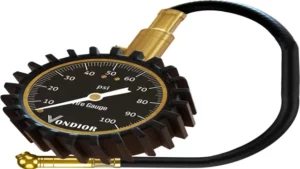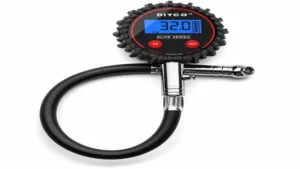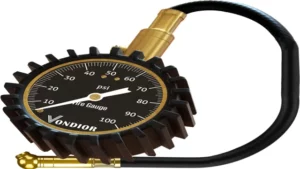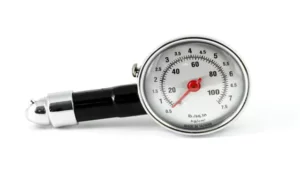Do you notice that your car tires are not performing at their best? Maybe it’s time to check their pressure. A digital tire pressure gauge can help you with that task, but it needs to be calibrated regularly. Calibration can ensure that your tire pressure gauge is measuring accurately, giving you peace of mind and avoiding any dangerous situations on the road.
In this blog post, we’ll guide you through the steps to calibrate your digital tire pressure gauge so you can drive safely.
Understand the Importance of Calibration
If you own a digital tire pressure gauge, it’s important to know how to calibrate it regularly to ensure accurate readings. Calibration is the process of comparing the gauge’s reading to a known standard, usually a high-end pressure gauge, and adjusting it if necessary. It’s easy to forget to calibrate your tire pressure gauge, but doing so is essential to maintaining proper tire pressure for safety and fuel efficiency.
To calibrate your digital tire pressure gauge, you will need a known standard, typically a high-end analog gauge or a calibration tool provided by the manufacturer. Place both gauges on a flat surface and compare the readings, adjusting the digital gauge if necessary. Remember to calibrate your digital tire pressure gauge regularly to stay safe on the road.
Why calibrate a digital tire pressure gauge?
Calibrating your digital tire pressure gauge is vitally important to ensure accurate readings. A gauge that is not calibrated can provide inaccurate readings, which can cause underinflation or overinflation of your tires. This can lead to a host of problems, including decreased fuel efficiency, poor handling, and even tire blowouts.
By regularly calibrating your gauge, you can ensure that it is providing accurate readings, which will help you to maintain the correct tire pressure and avoid any unnecessary risks on the road. Think of calibration as a tune-up for your gauge, ensuring that it is performing at its best, just like how you would get a tune-up for your car to keep it running smoothly. So, always make sure to calibrate your tire pressure gauge regularly to keep your vehicle operating safely and efficiently.
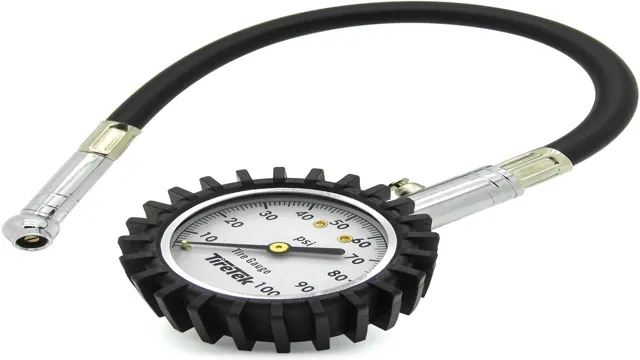
What happens if you don’t calibrate the gauge?
Calibration Calibration is often overlooked, but it’s a vital component of keeping your gauge in top-notch condition. If you don’t calibrate your gauge, you’ll run the risk of inaccurate measurements, which can lead to a plethora of unwanted consequences. For instance, let’s say you’re using a torque wrench to tighten bolts in your car.
If the wrench isn’t calibrated correctly, you may end up cracking the bolt or ruining the thread, making it almost impossible to fix. You might even damage your car’s engine or other parts, resulting in costly repairs. Calibrating your gauge ensures that it gives you precise readings, which is invaluable in many industries, such as manufacturing, construction, and so on.
Remember that calibrating your gauge is not a one-time task. You need to do it regularly to maintain its accuracy and reliability.
Gather Your Materials
Calibrating a digital tire pressure gauge is a simple and straightforward process that can help ensure accurate readings and extend the life of your tires. To begin, you will need a few basic materials, including the gauge itself, a tire inflator, and a reference pressure source. The reference source can be a manually calibrated gauge or a pressure gauge that has been checked and calibrated by a professional.
Once you have gathered your materials, it is important to ensure that the gauge is properly powered and set to the correct units of measurement. This can typically be done by pressing a button or adjusting a small switch on the gauge itself. With your materials in hand and your gauge set up correctly, you are ready to begin the calibration process and ensure that your tire pressure readings are as accurate as possible.
What materials will you need?
When it comes to starting a new project, the first thing you’ll need to consider is what materials you’ll need. Depending on the project, the materials required can vary greatly. It’s important to gather all the necessary materials before starting the project to avoid any delays or complications.
Some common materials you may need include tools such as hammers, screwdrivers, and saws, as well as materials such as wood, metal, and various types of hardware. It’s also important to have safety equipment on hand, such as gloves and safety glasses, to ensure you’re protected while working with potentially dangerous tools and materials. Before getting started, take the time to research what materials will be required for your particular project and make sure you have everything you need ahead of time.
This will help make the project run smoothly and ensure that you can complete it successfully.
Do you have to buy a calibration tool?
When it comes to calibrating your monitor, you may be wondering if you need to buy a calibration tool to get the job done. The short answer is yes, you will need a calibration tool to ensure accurate and consistent results. However, there are a few other materials you will need to gather before you get started.
Firstly, make sure your monitor is clean and free of dust and smudges. You don’t want any dirt interfering with the calibration process. Additionally, it’s helpful to have a print or digital copy of an image with known color values for reference during calibration.
This will help you ensure that your monitor is displaying colors accurately. By gathering these materials and investing in a quality calibration tool, you can ensure that your monitor is displaying colors as they were intended to be seen.
Check the Accuracy of Your Gauge
If you want to ensure the accuracy of your digital tire pressure gauge, it’s important to calibrate it regularly. One way to do this is by checking the gauge against a reference pressure gauge that is known to be accurate. To begin, make sure that both gauges are reading the same pressure when they are connected to the same tire.
If there is a difference in the readings, adjust the digital gauge until it is showing the same pressure as the reference gauge. This may involve using a calibration button or other adjustment feature on the gauge. Once you have calibrated the gauge in this way, it should be much more accurate when you use it to measure tire pressure in the future.
By following these steps and regularly checking the accuracy of your digital tire pressure gauge, you can ensure that your tires are always properly inflated and that you are getting the best possible performance and fuel efficiency from your vehicle.
How to check if your gauge is accurate
When it comes to accuracy, the gauge is a critical tool for measurement in many industries. A faulty gauge can lead to mistakes and even accidents. So, it’s important to check the accuracy of your gauge regularly.
One way to do this is to use a calibration machine that can apply a known amount of pressure or other substance to the gauge and compare its reading to the standard measurement. Another method is to use a master gauge that has already been calibrated to check the readings of your gauge. You can also compare your gauge to other gauges of the same type to verify its accuracy.
By following these simple steps and ensuring the accuracy of your gauge, you’ll have peace of mind that your measurements are correct and reliable.
What if your gauge is not accurate?
If you’re using a pressure gauge, but have doubts about its accuracy, there are measures you can take to check it. It’s always better to make sure your gauge is accurate because incorrect readings can lead to disastrous outcomes. One way to test your gauge is to compare it to a known precision pressure gauge.
You’ll want to connect both gauges to the same pressure source and note the readings. If your gauge consistently reads differently from the known precision gauge, then you know it’s inaccurate. Inaccuracies can sometimes happen because of age, damage, or simply improper use.
Make sure you’re following the manufacturer’s guidelines on maintenance, installation, and usage. By doing so, you’ll maximize the lifespan and accuracy of your gauge. In conclusion, if you’re in doubt about your gauge’s accuracy, don’t take any chances, take the time to double-check and test its readings.
Calibrate the Gauge
If you own a digital tire pressure gauge, it’s crucial to ensure it’s calibrated correctly to get accurate readings. Here’s how to calibrate a digital tire pressure gauge. To begin with, locate the calibration button, usually found on the side of the device, then press and hold it until the display clears.
Next, find the calibration screw on the back of the device, then press the inflation tip to the valve stem until it fits snugly. Use the calibration screw to adjust the gauge reading to the actual pressure indicated on a known accurate gauge or the tire manufacturer’s recommended pressure. Double-check the calibration to ensure you get a consistent reading, and you’re done! Calibrating your digital tire pressure gauge will give you peace of mind that your tire pressure is accurate and that you’re driving on safe tires.
Step-by-step instructions for calibration
So, you’ve got a new pressure gauge and you want to make sure it’s giving you accurate readings. The best way to do this is to calibrate it. Here’s how: Step 1: Get a calibration device.
This could be a handheld pressure calibrator or a pressure comparator. Make sure it’s compatible with your gauge. Step 2: Connect the calibration device to your gauge.
Follow the manufacturer’s instructions carefully to ensure a good connection. Step 3: Apply a known pressure to the gauge. This could be a low pressure, high pressure, or something in between.
Just make sure you know what the pressure is supposed to be. Step 4: Compare the gauge’s reading to the known pressure. If there’s a difference, adjust the gauge until it matches the known pressure.
You may need to repeat this step a few times to get an accurate reading. Step 5: Test the gauge at different pressures. This will help you ensure that the gauge is accurate across its entire range.
By following these steps, you can calibrate your pressure gauge and be confident that you’re getting accurate readings. Remember to repeat this process periodically to ensure that your gauge stays calibrated. Keyword: pressure gauge calibration.
How often should you calibrate the gauge?
When it comes to managing precision instruments, calibration is essential to ensure accurate readings. But how often should you calibrate the gauge? Well, it depends on several factors such as the type of gauge, usage, environmental conditions, and manufacturer recommendations. Typically, gauges used in critical applications requiring high accuracy need more frequent calibration than those used for non-critical applications.
For instance, a pressure gauge used in a chemical plant or aviation industry may require monthly or weekly calibration, whereas a gauge used for general purposes in an office may only need calibration every six months to a year. Also, factors such as temperature changes, vibrations, and mechanical shocks can impact gauge accuracy and may require more frequent calibration. It’s always best to follow the manufacturer’s recommendation and calibration schedule to ensure gauge accuracy.
Neglecting calibration can lead to measurement inaccuracies, rejected products, safety issues, and costly downtime. So, to ensure gauge accuracy and reliability, it’s best to establish a calibration routine and stick to it.
Conclusion
In conclusion, calibrating a digital tire pressure gauge is not rocket science, but it does require a certain level of attention to detail and precision. Just like a perfectly executed punchline, calibrating your gauge correctly can mean the difference between great results and being left out in the cold. So, take the time to carefully follow the manufacturer’s instructions, and don’t forget to double-check your readings before hitting the road.
With a well-calibrated gauge in hand, you’ll be ready to conquer any tire pressure challenge that comes your way. Happy calibrating! “
FAQs
What is a digital tire pressure gauge and how does it work?
A digital tire pressure gauge is a device used to measure the air pressure inside a tire. It uses a digital display to show the results. To use it, you simply place the nozzle onto the valve stem and the gauge will show the current air pressure reading.
How often should I calibrate my digital tire pressure gauge?
It is recommended to calibrate your digital tire pressure gauge at least once a year. However, if you use it frequently or it experiences any damage or impact, it should be calibrated more often.
What is the calibration process for a digital tire pressure gauge?
To calibrate a digital tire pressure gauge, you will need an accurate pressure source and a calibration tool. First, turn on the gauge and make sure it reads zero. Then, connect the gauge to the pressure source and record the reading. Use the calibration tool to adjust the gauge reading to match the pressure source reading.
Can I calibrate my digital tire pressure gauge myself or should I take it to a professional?
You can calibrate your digital tire pressure gauge yourself if you have the proper tools and knowledge. However, if you are unsure or do not feel confident in your ability to perform the calibration, it is best to take it to a professional.
What are some signs that my digital tire pressure gauge may need to be calibrated?
If your gauge is displaying inconsistent or inaccurate readings, it may need to be calibrated. Additionally, if it has been dropped or damaged in any way, it should be calibrated to ensure accurate readings.
How important is it to have an accurate tire pressure gauge?
It is crucial to have an accurate tire pressure gauge as it can help ensure optimal driving performance, increased safety, and improved tire lifespan. Proper tire pressure can also improve fuel efficiency and reduce the risk of tire blowouts.
Can I use a digital tire pressure gauge on all types of tires, including those on motorcycles or bicycles?
Yes, digital tire pressure gauges can be used on all types of tires, including those on motorcycles or bicycles. However, it is important to make sure the gauge you are using is suitable for the type of tire you are measuring.
